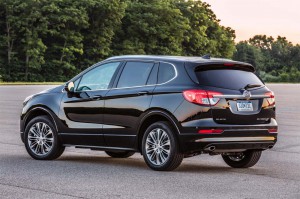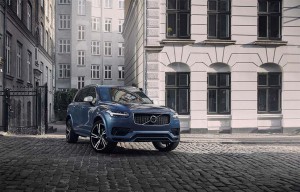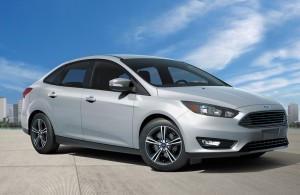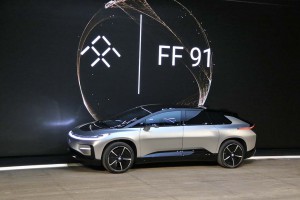The Chinese are coming! The Chinese are coming! No, that’s not the call of a modern-day Paul Revere, but a warning we’ve been hearing around automotive circles for the better part of a decade.
A number of China’s domestic brands have shown off their wares at big auto events, including the Detroit and Los Angeles Auto Shows, but have yet to make the big leap across the Pacific and actually offer them for sale. That could happen in the very near future. We saw both Chery and Borgward reveal products earmarked for Europe at the Frankfurt Motor Show just two months ago and we’d not be surprised to see more Chinese products at the upcoming North American International Auto Show in Detroit come January.
But for those who still wonder if and when the Chinese will get the quality, design, safety and content up to the demanding standards of the U.S. market, the answer is that they’re already there. And the big surprise is that at least three Chinese-made products are already on sale in the States, albeit wearing, Volvo, Buick and Cadillac badges – and with Ford soon to start bringing in a Chinese-made sedan.
“China is already weaving itself into the fabric of our car market,” notes long-time Chinese automotive industry analyst Michael Dunne. “It’s just that you may not realize it.”

The Buick Envision is one of two Chinese-made models imported by GM, along with the Cadillac CT6 plug-in hybrid.
Exactly who gets credit for selling the first Chinese-made car in the U.S. is a matter of debate. Back in 2011, California-based Coda introduced a battery-electric vehicle that mated an American-made drivetrain with a “glider” body imported from China. The vehicle barely met American standards and the project quickly folded.
Volvo generally gets credit for being the first volume manufacturer to market a Chinese-made product, a stretch version of the S60 sedan, dubbed the Inscription, which came to market in late 2015. It added another 3.4 inches of rear legroom to the S60, taking it from cramped to what Volvo claims is best-in-class space.
Months later, General Motors quietly joined the party, launching an Americanized version of the Envision rolling off its assembly line in Shanghai. It was just a matter of time considering GM now sells more Buicks in China than the U.S., and it was an easy was to add a compact SUV to the brand’s line-up in the States.
GM also is importing the plug-in hybrid version of its big CT6 sedan from China. It didn’t make sense to tool up for the hybrid in the U.S., brand boss Johan de Nysschen has told TheDetroitBureau.com, since volume here is likely to be modest. But in China, where new rules meant to boost sales of battery-based vehicles are just going into effect, the plug-in may soon be a high-volume version of the CT6.
(China ups pressure on automakers to go electric. Click Here for the latest.)
Next up? In early 2016, Ford announced plans to re-tool its Wayne, Michigan assembly plant to build the new Ranger and Bronco models. In turn, it said it would move production of the Focus to a new plant in Mexico. Ford has now scrubbed that factory and is, instead, consolidating production of the Focus into a plant in China. While demand for the sedan has been falling as the U.S. market shifts to trucks, the Focus could soon become the highest-volume vehicle imported from China, according to several observers, when the switch is thrown in 2019.
But, says analyst Dunne, “this is just the start.” A number of other Chinese makers are looking to export products to the States. One possible model is the Exeed TX sport-utility vehicle that Chery unveiled at the Frankfurt Motor Show last month.
While the Chinese are looking at the Koreans and Japanese for some guidance as to cracking the American market they’re also looking to break with the past, a number of Chinese companies aiming for higher-end models, rather than the entry-level approach. So, you may see them go after Hyundai’s new Genesis brand, rather than cheap-and-cheerful models, such as the little Hyundai Accent.
Another twist? It took years before the Japanese and Koreans set up U.S. assembly plants. Not so the Chinese.
“SF Motors, an electric vehicle specialist based in Chongqing, acquired the Indiana-based AM General plant in July,” Dunne wrote in a recent report. “SF also invested $10 million into an R&D facility outside Detroit. SF says it will soon produce electric vehicles at the AM General plant.”
Then there’s the Wanxiang Group, a major Chinese auto parts manufacturer, purchased most of the assets of the bankrupt American Fisker Automotive in 2013. It’s been renamed Karma and is now operating out of a small plant in California, not far from its newly opened headquarters. There’s also an R&D center near Detroit.
SAIC, the Shanghai-based giant that is partnered with both GM and Volkswagen, has a U.S. headquarters office in the Detroit suburb of Birmingham, and it recently got licensed to begin testing autonomous vehicles in California.
BYD, a major electric vehicle manufacturer, has its own offices in California. It has been promising to launch U.S. sales of its battery-cars for a decade, always pulling back at the last minute. But BYD has become a major supplier of electric buses and recently announced it will triple the size of its production line in Lancaster, California.
(BMW talking about EV joint venture in China. Click Here for the story.)
To the list add several start-ups, including LeEco and Faraday Future, both U.S.-based battery-car wannabes funded by one of China’s richest men, Jia Yueting. Both start-ups are facing financial problems, however, and it is not clear whether either of them will actually ever get into production.
“Imagine it,” says Dunne. “Chinese auto companies are moving into America so quickly and so covertly, even the Chinese cannot keep up with the Chinese.”
(Strong demand in China helps GM deliver better Q3 earnings than expected. Click Here for more.)




